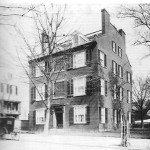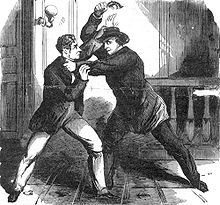In the recent en banc decision in Ariad Pharmaceuticals, Inc. v. Eli Lilly and Co., 2008-1248 (Fed. Cir. Mar. 22, 2010), the majority opinion contains the following statement about not disrupting settled expectations of the inventing community:
In addition to the statutory language and Supreme Court precedent supporting the existence of a written description requirement separate from enablement, stare decisis impels us to uphold it now. Ariad acknowledges that this has been the law for over forty years, see Appellee Br. 24, and to change course now would disrupt the settled expectations of the inventing community, which has relied on it in drafting and prosecuting patents, concluding licensing agreements, and rendering validity and infringement opinions. As the Supreme Court stated in admonishing this court, we “must be cautious before adopting changes that disrupt the settled expectations of the inventing community.” Festo, 535 U.S. at 739; see also Watson v. United States, 552 U.S. 74, 82 (2007) (“A difference of opinion within the Court . . . does not keep the door open for another try at statutory construction, where stare decisis has special force [since] the legislative power is implicated, and Congress remains free to alter what we have done.” (internal quotations omitted)). If the law of written description is to be changed, contrary to sound policy and the uniform holdings of this court, the settled expectations of the inventing and investing communities, and PTO practice, such a decision would require good reason and would rest with Congress.
While it is reassuring to know that the en banc panel of the Federal Circuit appreciates the importance of not disrupting the settled expectations of the inventing community, one wonders if this is more sizzle than steak.
(1) Take for example the cases of Dayco Prod., Inc. v. Total Containment, Inc., 329 F.3d 1358 (Fed. Cir. 2003) and McKesson Info. Solutions, Inc. v. Bridge Med., Inc., 487 F.3d 897 (Fed. Cir. 2007) in which the Federal Circuit seemingly failed to appreciate the long-accepted practice by the inventing community of not citing office actions from related patent applications back to the Patent Office (the same Patent Office that issued the office actions in the first place). In those cases, the Federal Circuit certainly disrupted the settled expectations of the inventing community by casting a cloud over the validity of many issued U.S. patents. As a kicker, the U.S. Patent Office, already struggling with a massive backlog, has been burdened with processing additional IDS filings that waste the Patent Office’s resources and applicants’ money.
(2) As another example, consider the use of patent abstracts by the Federal Circuit to construe claim language. Prior to the amendment of 37 CFR §1.72 this past decade, 37 CFR §1.72 expressly stated that the abstract of a patent “shall not be used for interpreting the scope of the claims.” Abstracts are required by the PTO to assist the PTO and the public generally in determining quickly from a cursory inspection of a patent application or issued patent the nature and gist of the technical disclosure.
In Hill-Rom Co., Inc. v. Kinetic Concepts, Inc., 209 F.3d 1337 (Fed. Cir. 2000), the court stated:
Citing 37 C.F.R. § 1.72(b), which provides that the abstract of the patent “shall not be used for interpreting the scope of the claims,” Hill-Rom argues that it would be improper for us to consider the abstract in determining whether the district court correctly construed the claims of the ‘346 patent. Section 1.72(b), however, is a rule of the Patent and Trademark Office that governs the conduct of patent examiners in examining patent applications; it does not address the process by which courts construe claims in infringement actions. We have frequently looked to the abstract to determine the scope of the invention, see, e.g., United States Surgical Corp. v. Ethicon, Inc., 103 F.3d 1554, 1560, 41 USPQ2d 1225, 1230 (Fed. Cir. 1997); Stryker Corp. v. Intermedics Orthopedics, Inc., 96 F.3d 1409, 1412, 40 USPQ2d 1065, 1066 (Fed. Cir. 1996); Moleculon Research Corp. v. CBS, Inc., 793 F.2d 1261, 1269, 229 USPQ 805, 810 (Fed. Cir. 1986), and we are aware of no legal principle that would require us to disregard that potentially helpful source of intrinsic evidence as to the meaning of claims.
The selective acknowledgement of Patent Office regulations by the Federal Circuit certainly does not indicate a respect for the settled expectations of the inventing community.
(3) Perhaps the strongest trend these days is for the Federal Circuit to rely heavily on the language “the invention” or “the present invention” when construing a claim. Such language has been used for aeons in patents. Nevertheless, in the last decade or so, the court has been relying on this language with increasing frequency to read limitations into a claim. In doing so, it failed to take into account the long-settled expectations of the inventing community as well as the significant effect on the construction of claim language in issued patents written as many as twenty years earlier.

